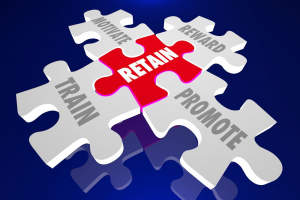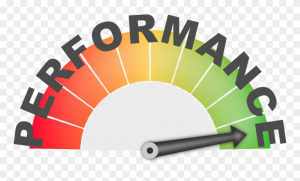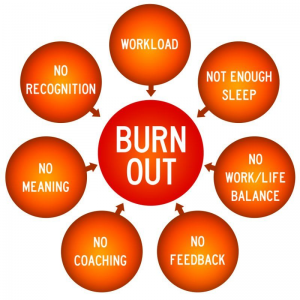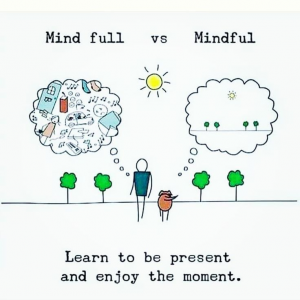Guidelines Designed To Help Your Organization Enhance Collaboration
 When it comes to collaborating with your own team, it can often seem like a no-brainer. You know everyone’s role and communication style, your meetings are fairly predictable and everything seems like it’s just humming along. But when you add another department or organization into the mix, it can really throw you for a loop. The dynamics are different, you don’t know everyone’s work style and communication can seem like a struggle. It can test both your team members and your leadership skills. However, if you build the foundation for strong cross department collaboration at the beginning of a project, it can make all the difference.
When it comes to collaborating with your own team, it can often seem like a no-brainer. You know everyone’s role and communication style, your meetings are fairly predictable and everything seems like it’s just humming along. But when you add another department or organization into the mix, it can really throw you for a loop. The dynamics are different, you don’t know everyone’s work style and communication can seem like a struggle. It can test both your team members and your leadership skills. However, if you build the foundation for strong cross department collaboration at the beginning of a project, it can make all the difference.
In our last article, we looked at the benefits of effective collaboration among departments, as well as the biggest offenders that lead to communication breakdown. What are some ways to enhance collaboration and avoid any pitfalls? Here’s a look at the top 6:
- Make sure everyone understands the overall objective and their role in it: We touched on this in our last article. If team members don’t understand their role and the common goal they’re working towards, it can really derail a project. Clear communication from the top is so important and it starts with strong leadership and transparency.
- Encourage consistent communication and feedback: Communication comes from the top. Leaders must create clear systems to make this happen and build a culture where team members feel comfortable providing feedback.
- Create a culture of collaboration and community: Casual get-togethers and other team-building opportunities are an important part of the collaboration process. More and more teams and departments are working remotely or on a hybrid schedule, adding another layer of challenges. Leading teams that are both remote and in-person work best when remote workers are encouraged to see and interact with the larger department teams.
- Get to know the way other departments work: Team members can’t collaborate effectively with other departments if they don’t understand what they do and their work style. Make sure your team members aren’t working in a bubble and have opportunities to job shadow if needed, get involved in other departments’ processes, etc.
- Share technology and information: Make sure each team has access to the same types of data, people, tools, etc. This keeps the lines of communication open and makes it easy for teams to approach one another if they have access to the same information.
- Celebrate successes: Taking time out to recognize team members’ contributions goes a long way towards building morale. And it doesn’t have to be at the end of the project. Celebrating milestones throughout the process is a great way to keep everyone motivated.
Collaborating across departments or organizations can seem like an uphill battle, but with the right coach by your side, it doesn’t have to be. Leah M Joppy and Associates can work with you to improve your collaboration efforts and ensure that there’s transparent communication, efficient processes and strong leadership at the helm. When collaborative efforts are working effectively, team members feel that their voice is valued, they’re more engaged, more receptive to ideas and more likely to do their best work. And who doesn’t want that?
Are you ready to learn more? Call us at 301-670-0051 or email us at leah@lmja.com.
When It’s Challenging To Recruit, Consider The Assets Of The Department
 It’s no secret that it’s getting more and more challenging to recruit, hire and retain employees. You may wonder how you can compete, particularly when other organizations may be willing to offer higher compensation. However, salary isn’t the only factor that job seekers look at when searching for a new position. So many other variables come into play, like a department’s culture, flexibility and an emphasis on well-being. The key to making your open positions stand out is to tell your unique story in a clear and effective way through a strong employee value proposition.
It’s no secret that it’s getting more and more challenging to recruit, hire and retain employees. You may wonder how you can compete, particularly when other organizations may be willing to offer higher compensation. However, salary isn’t the only factor that job seekers look at when searching for a new position. So many other variables come into play, like a department’s culture, flexibility and an emphasis on well-being. The key to making your open positions stand out is to tell your unique story in a clear and effective way through a strong employee value proposition.
What is an employee value proposition (EVP)? Simply put, an EVP communicates the value an employer provides to its employees. Some of these assets may be beyond your control, but others can be emphasized by good leadership and professionalism. The most compelling EVPs include tangible assets, like benefits packages, and intangible values such as professional growth opportunities. The more benefits of working for your organization that you provide, the stronger your EVP is when hiring new team members.
No matter the state of the job market, an effective EVP is a vital tool for talent acquisition. It encompasses the assets you offer as an employer to attract new talent and retain your best employees. Here’s a sample of three sections every good EVP should have:
- Benefits and Perks: According to a Glassdoor survey, 80% of employees value stronger benefits packages over pay increases. Employee benefits are an important part of a good EVP and you should be clear about what you offer. Here’s a sample of what you can include:
- Health insurance policy
- Childcare
- Sick leave
- Parental leave
- Paid vacation
- Retirement plan
- Career Development Opportunities: Providing employees with the opportunity to learn new skills shows them you’re invested in their success. Career development options could include the following:
- On-site training opportunities. We can help reinforce training for your group!
- Tuition assistance.
- Coaching opportunities. LMJA also offers coaching to groups or individuals.
- Certification programs.
- Organizational Culture: Unlike the last two examples, an organization’s culture isn’t tangible, but that doesn’t make it any less important. In fact, cultural fit is key when attracting and retaining employees. LMJA and Associates is particularly helpful in developing and maintaining an attractive culture. Here are some ways to showcase your organization’s culture:
- Hybrid and remote work opportunities.
- Flexible hours. Can a new employee work around hours that fit his/her schedule more easily?
- Teamwork values. How effective are your teams? True teamwork increases work satisfaction. We can help with quality team management.
- Diversity and inclusion statements. The value of diversity has increased in the last few years. LMJA can help here too.
- Management style. LMJA has several courses aimed at building exceptional leadership skills.
- Well-being perks.
With available jobs seemingly outpacing the number of candidates, it’s more important than ever for organizations to attract and retain talent. That’s why it’s vital for organizations to develop a compelling EVP and then effectively communicate it both internally and externally. It can seem like a daunting task, but Leah M Joppy and Associates can help you create an EVP and add various strengths throughout the department. Through these efforts, you have the ability to tell your organization’s unique story and why potential new hires should work for you! Contact us at 301-670-0051 or email us at leah@lmja.com to learn more and get started.
The Composition Of An Effective Team
 Have you ever been a member of (or led) an exceptional workplace team? What are some of the positives that come to mind? Was it engaging and collaborative? Did you meet and exceed your goals? Did everyone feel valued and appreciated? It’s a great feeling, isn’t it? Yet all too often, teams fall short of being as effective as they can be and reaching their potential. The impacts are felt by employees, leaders and organizations as a whole.
Have you ever been a member of (or led) an exceptional workplace team? What are some of the positives that come to mind? Was it engaging and collaborative? Did you meet and exceed your goals? Did everyone feel valued and appreciated? It’s a great feeling, isn’t it? Yet all too often, teams fall short of being as effective as they can be and reaching their potential. The impacts are felt by employees, leaders and organizations as a whole.
So, what exactly do we mean by an “effective team”? It’s the capacity of a group of people, usually with complementary skills, to work together to achieve its goals and objectives. And it’s one of the biggest indicators of an organization’s success. According to Gallup, teams that rank in the top 20% for connectedness see 41% less absenteeism, 59% less employee turnover and a 66% increase in employee wellness. With numbers like that, it’s hard to argue that high performing teams are an integral part of your organization and worth the investment to develop and nurture.
Teams are as varied and unique as the people within them, but when it comes to effective, high performing teams, there are some common characteristics:
- Clear, achievable goals
- A shared commitment
- Clarity of roles and responsibilities
- A sense of purpose
- Clear processes and procedures
- Joint accountability
- A result-oriented approach
Effective teams also tend to show greater resilience by working through challenges and bouncing back from adversity. They also tend to maintain vitality and the energy needed for future success.
It’s no surprise that an effective team is only as strong as the person leading it. In our next article, we’ll get into more about what it takes to lead a high-performance team. The right leadership enhances a team’s success, but far too often, people are placed in leadership roles without any proper leadership development training. It’s vital for leaders to take advantage of every opportunity to enhance their leadership skills. However, it’s also vital for organizations to provide these opportunities in the first place. Working with a coach like Leah M Joppy and Associates can help your leaders identify their strengths and weaknesses and develop the skills needed to build effective teams (strong communication, building trust and resiliency, defining roles and responsibilities and so much more).
Do you want to lead a high performing team, but don’t know where to start? Contact Leah M Joppy and Associates at 301-670-0051 or email us at leah@lmja.com to learn more and get started.
Top Five Suggestions For Leading An Effective Team
 Today’s leaders often feel like they’re in a never-ending game of tug-of-war. Between dealing with day-to-day obstacles, managing projects and team members, it can be overwhelming. The “people” component is certainly the most integral to an organization and can prove to be the most challenging. Building a high-performing team is more than just putting together a group of talented people with the right skills. It requires careful development of each member’s unique talents and characteristics.
Today’s leaders often feel like they’re in a never-ending game of tug-of-war. Between dealing with day-to-day obstacles, managing projects and team members, it can be overwhelming. The “people” component is certainly the most integral to an organization and can prove to be the most challenging. Building a high-performing team is more than just putting together a group of talented people with the right skills. It requires careful development of each member’s unique talents and characteristics.
There is so much strong leaders can do to build effective, high-performing teams. Here’s a look at the top five suggestions. But remember, it’s a marathon and not a sprint. It’s a continuous process and not a “one and done” task:
- Establish meaning and purpose: It’s a leader’s job to help employees and teams find meaning in their work. To increase productivity and motivation, have discussions about the “why” of your team’s tasks. Team members who are passionate and motivated help drive team effectiveness because they understand how their work contributes to the organization’s overall objectives.
- Define roles and responsibilities: Leaders must ensure that everyone on the team knows exactly what is expected of them. It reduces confusion and conflict and allows teams to work more efficiently. Role clarity also enables leaders to hold team members accountable for their performance and identify areas where someone may struggle.
- Communicate effectively: Effective communication and effective leadership are definitely intertwined and it can make, or break, a team. As a leader, it’s vital to: practice active listening and allow people to give constructive feedback without fear of repercussions; ask questions and don’t be defensive; have an open-door policy; follow through with actions.
- Focus on building relationships: Building relationships helps to create (or reinforce) an organization’s values and culture. Once leaders and team members genuinely trust and respect each other, regular, open dialogue about individual and team performance increases team effectiveness.
- Provide productive, specific and timely feedback: Feedback is critical to improving performance, but how you deliver it can make a big difference. Productive feedback enables team members to see their successes and missteps and grow from the experience.
To build high-performing teams, organizations must cultivate high-performing leaders. People skills typically account for 80 percent of success in a leadership role. Yet many people are promoted into leadership because of their technical capabilities, without mastering the skills of managing and motivating others. Without these basic skills, leaders at every level can struggle with building high-performing teams. Leah M Joppy and Associates understands the challenges that accompany leadership roles and knows the proven techniques for building strong leaders who can build motivated, productive teams.
Ready to learn more? Call us at 301-670-0051 or email us at leah@lmja.com.
Burnout For Individuals
 We all have days when we feel overwhelmed, unappreciated or helpless. Sometimes just getting out of bed and facing the workday can feel like an impossible task. However, if you feel like this most of the time, you might be dealing with more than you think. You could be suffering from burnout, a gradual process with subtle signs and symptoms that worsen over time.
We all have days when we feel overwhelmed, unappreciated or helpless. Sometimes just getting out of bed and facing the workday can feel like an impossible task. However, if you feel like this most of the time, you might be dealing with more than you think. You could be suffering from burnout, a gradual process with subtle signs and symptoms that worsen over time.
We hear the term “burnout” all the time, but most of us think it’s just another name for stress and all of the challenges that come with it. But there is a distinct difference. Stress is having too much on your plate (too many responsibilities, work to handle, etc.), but burnout is the opposite. With burnout, you may feel like you don’t have enough, as in not enough energy or not enough motivation. It feels like you’ve run out of gas and completing even small tasks can seem like an impossible feat. Burnout has become a chronic issue in the workplace, so much so that in 2019, the World Health Organization classified it as an “occupational phenomenon.” And this was before the pandemic.
When we’re going through the day-to-day of life, often we don’t feel like we have time to step back and assess our overall mental health. We just keep pushing through to get it all done. But burnout is sneaky. What starts as a few “bad days” or weeks can result in something far more serious. Burnout can affect every aspect of a person’s life from emotional to physical and behavioral. Below, we’ve broken down the signs and symptoms of each:
Emotional Symptoms
- Feeling hopeless and trapped
- Experiencing loss of motivation
- Having an increasingly cynical and negative outlook
- Feeling like a failure and experiencing self-doubt and lack of accomplishment
Physical Symptoms
- Feeling drained and tired the majority of the time
- Experiencing frequent headaches and muscle aches
- Dealing with changes in appetite and sleep habits
Behavioral Symptoms
- Taking frustrations out on others
- Withdrawing from responsibilities and isolating from other people
- Using food, drugs or alcohol to cope
- Continually procrastinating or taking longer than usual to get things done
Burnout not only leads to issues in the workplace, but spills over into every area of life, including home and social life. But when you’re in the midst of burnout, taking the first step towards a solution can feel almost impossible. That’s where working with a coach, like Leah M Joppy and Associates, can be a vital source of healing. We get to know you and the root causes of what’s leading to burnout. We can then help you build habits that lead to improved sleep and relaxation, help you find your motivation again and build that essential work/life balance that’s missing in so many of our lives.
Don’t put yourself on the backburner and let burnout sneak up and take control of your life. Contact Leah M Joppy and Associates at 301-670-0051 or email leah@lmja.com to learn how we can help.
Controlling Stress By Practicing Mindfulness
 We are all dealing with different stressors in our lives right now. Work responsibilities, balancing career and family, health concerns – the list seems to go on and on. Now that we’ve started a New Year, many of us are looking for ways to reduce anxiety and feel a sense of calm and balance in our day-to-day lives. You’ve probably heard the term “mindfulness” thrown around and wondered if it really works or is just another buzzword or fad. Research has shown that practicing mindfulness reduces activity in the part of your brain called the amygdala. The amygdala is central to switching on your stress response, so by practicing mindfulness, you’re reducing your background level of stress. And who doesn’t need a little of that right now?
We are all dealing with different stressors in our lives right now. Work responsibilities, balancing career and family, health concerns – the list seems to go on and on. Now that we’ve started a New Year, many of us are looking for ways to reduce anxiety and feel a sense of calm and balance in our day-to-day lives. You’ve probably heard the term “mindfulness” thrown around and wondered if it really works or is just another buzzword or fad. Research has shown that practicing mindfulness reduces activity in the part of your brain called the amygdala. The amygdala is central to switching on your stress response, so by practicing mindfulness, you’re reducing your background level of stress. And who doesn’t need a little of that right now?
So, what exactly is mindfulness and how can it help during times of difficulty, as well as everyday life? Jon Kabat-Zinn, psychologist and founder of the Mindfulness-Based Stress Reduction (MBSR) program, defines mindfulness as “paying attention in a particular way, on purpose, in the present moment and nonjudgmentally.” In short, to be mindful is to be purposeful about where you direct your attention. Instead of letting your thoughts run wild, you take a step back and become intentional about where you put your focus.
Here a few of the benefits of practicing mindfulness:
- Physical and Emotional Health: According to research, practicing mindfulness regularly can help manage anxiety. It also complements medical and psychological treatments and can help reduce pain and symptoms of conditions such as depression, high blood pressure and addiction.
- Emotional and Cognitive Regulation: A regular mindfulness practice has been shown to increase focus and help with memory and problem-solving abilities. It can also improve the brain’s capacity for decision-making.
- Happiness and Joy: By practicing mindfulness, you’ll find it easier to take a few deep breaths and respond in a more patient and thoughtful way to challenging situations or people. You’ll begin to slow down during particularly difficult parts of your day and not react to problems hastily. It also helps you tune in to pleasant experiences that are around you, even during times of stress.
Mindfulness takes practice, but the effort is well worth the reward! In our next article, we’ll take a look at some simple ways to start a mindfulness practice. Leah M Joppy and Associates has conducted many seminars focusing on strategies we can all use to get through life’s challenges. We can tailor a seminar that focuses on mindfulness practices, stress reduction and more. How can we help you? Call us at 301-670-0051 or email leah@lmja.com to learn more.
How Can I Begin A Mindfulness Routine?
 Mindfulness is such a popular topic these days, but promising new research has shown how practicing mindfulness can be a powerful and effective treatment for anxiety. In a new clinical trial from Georgetown University Medical Center, mindfulness-based stress reduction (MBSR) was shown to be as effective as escitalopram (Lexapro), a commonly used antidepressant, in treating anxiety disorders in some people. Mindfulness is an effective method to bring people back to the present through breath and body awareness. It can help better regulate the body’s response to stressful, negative thoughts and rewire how a person relates to anxiety. The big question many have is: how do I get started?
Mindfulness is such a popular topic these days, but promising new research has shown how practicing mindfulness can be a powerful and effective treatment for anxiety. In a new clinical trial from Georgetown University Medical Center, mindfulness-based stress reduction (MBSR) was shown to be as effective as escitalopram (Lexapro), a commonly used antidepressant, in treating anxiety disorders in some people. Mindfulness is an effective method to bring people back to the present through breath and body awareness. It can help better regulate the body’s response to stressful, negative thoughts and rewire how a person relates to anxiety. The big question many have is: how do I get started?
Here are a few simple ways to begin a mindfulness routine:
- Pay attention to your breath: Noticing your breath is a vital starting point for any mindfulness practice. Set a timer for three minutes and turn your attention to the physical sensation of your breath (don’t manipulate or control your breathing, just focus on your normal breath). When you find yourself getting distracted, as we all do, redirect and refocus.
- Do a body scan: Body scanning is placing your attention on one body part at a time (for example, the soles of your feet) and then pausing to explore any sensations or feelings in that area. Then, shift your attention to another part of your body. Pause there and move on to another area. For a full body scan, you may want to start at your head and work your way down to your feet.
- Listen to the world around you: Mindfulness also involves turning your attention outward in addition to inward. Set a timer for five minutes and tune into the sounds around you (traffic noise, birds singing, etc). Close your eyes and hear what’s coming and going. Listen to the tone and volume.
- Take a mindfulness walk: As you walk, pay attention to the sensations of your body. How do your feet feel? Notice how your arms swing as you walk. Become more aware of your surroundings and notice the sights, sounds and smells. It’s really about opening up your senses and not walking on auto-pilot.
Distraction is normal during mindfulness, so don’t beat yourself up if you find your mind wandering during your practice. Refocusing your mind when you get distracted is the equivalent of what mindfulness practitioners call “mental pushups”. Don’t give up – with time, your ability to focus will get stronger.
Like exercise, meditation takes practice. Many of us may feel like we can’t block off a chunk of time in our already busy schedules, but even just five to ten minutes of mindfulness a day can make an enormous impact on our well-being. Are you interested in learning more about mindfulness and how it can benefit you? Leah M Joppy and Associates is ready to help. Call us at 301-670-0051 or email leah@lmja.com to learn more.
Psychological Safety
 Did you ever have an experience in the workplace that didn’t sit right with you? If so, did you feel comfortable speaking up? Perhaps you had an idea about how to improve something within your organization. Did you feel confident sharing it or did you think “why bother” and keep it to yourself? Turns out, the level of psychological safety within your office often dictates the answer to these questions and the overall culture of an organization.
Did you ever have an experience in the workplace that didn’t sit right with you? If so, did you feel comfortable speaking up? Perhaps you had an idea about how to improve something within your organization. Did you feel confident sharing it or did you think “why bother” and keep it to yourself? Turns out, the level of psychological safety within your office often dictates the answer to these questions and the overall culture of an organization.
As I mentioned in past articles, I have recently completed a certification from Cornell University on Diversity, Equity and Inclusion. The course, taught by Professor Nishii, tackles the issue of employee engagement and its three components. So far, we’ve examined psychological availability and psychological meaningfulness. This month, we’ll look at the third component: psychological safety.
What Is Psychological Safety?
Organizational psychologist William Kahn, author of the 1990 study “Physical Conditions of Personal Engagement and Disengagement at Work”, defined psychological safety as “being able to employ one’s self without fear of negative consequences to self-image, status and career”. Harvard Business School professor, Amy Edmondson, brought the idea to the masses and described it as, “a climate where people feel safe enough to take interpersonal risks by speaking up and sharing concerns, questions or ideas.” The ultimate goal is a feeling of belonging and feeling heard. And it’s something every organization should prioritize.
Why Is Psychological Safety Important?
There are few things more frustrating for team members than having an idea, suggestion or question, but not feeling able to share it or feel like anyone is listening. It not only leads to disengagement, but lowered morale, productivity and ultimately, higher turnover. On the flipside, high levels of psychological safety have shown to improve decision-making and team dynamics. When people aren’t constantly concerned about saying “the wrong thing”, organizations see greater innovation and creativity.
According to Dr. Timothy Clark in his book “The 4 Stages of Psychological Safety: Defining the Path to Inclusion and Innovation”, the stages are as follows:
- Stage 1 – Inclusion Safety: a feeling of connecting and belonging
- Stage 2 – Learner Safety: feeling safe to learn, ask questions and experiment
- Stage 3 – Contributor Safety: feeling safe to make a valuable contribution using your skills and gifts
- Stage 4 – Challenger Safety: feeling safe enough to challenge the status quo when you see an opportunity for change or improvement
How would you rate the level of psychological safety within your organization? Do team members feel comfortable sharing their ideas, questions and concerns or is there room for improvement? That’s where Leah M Joppy and Associates can step in and help. We can look at your current practices and help you craft new and innovative ways to communicate, problem-solve and engage with team members. This is particularly valuable for those who work from home and may feel more isolated and less engaged with day-to-day office life.
Let’s help create engagement in your organization via high levels of psychological safety. Call us at 301-670-0051 or email us at leah@lmja.com today.
Job Crafting: Redesigning Work
 What makes a job meaningful? Helping others? Salary or other perks? Flexibility? A sense of autonomy? The answers are as varied as the team members in your organization. What we do know is that perceiving a job as meaningful can be the difference between employees staying and contributing their best work – or moving on to greener pastures. Our last article looked at why meaningful work matters, but what steps can organizations take to make it happen? Let’s take a look at one example: job crafting. It’s not a new idea, but one that’s getting more attention since the pandemic and resulting changes in the workplace.
What makes a job meaningful? Helping others? Salary or other perks? Flexibility? A sense of autonomy? The answers are as varied as the team members in your organization. What we do know is that perceiving a job as meaningful can be the difference between employees staying and contributing their best work – or moving on to greener pastures. Our last article looked at why meaningful work matters, but what steps can organizations take to make it happen? Let’s take a look at one example: job crafting. It’s not a new idea, but one that’s getting more attention since the pandemic and resulting changes in the workplace.
What is job crafting? It’s about taking proactive steps and actions to redesign what team members do at work, essentially changing the tasks, relationships and perceptions of jobs. The main idea is that employees can stay in the same role, but get more meaning out of their jobs by simply changing what they do and the “whole point” behind it. Job crafting is creating positions that align with employees’ strengths, passions and motives.
Here’s an example: A marketing analyst spends her days examining data, researching and looking at trends. While she’s great at her job, she would really like to branch out and add some creative projects to her routine. So, she requests a meeting with the social media marketing manager at her organization to learn more about what he does and how she can incorporate her expertise to help on the creative side. Her boss works with her to help add more of these types of projects into her job.
Job crafting is broken down into three key types:
- Task Crafting: Changing responsibilities. This is altering the type, scope, sequence or number of tasks that make up a job to improve it in some way. For example, a long-time team member could offer to mentor new employees. The marketing analyst example above also uses task crafting.
- Relationship Crafting: Changing interactions. This is altering the people that employees typically interact with in a job. For example, leaders and team members can form new interdepartmental task forces.
- Cognitive Crafting: Changing mindset. This is altering the way team members interpret the tasks they’re responsible for and focusing on how their efforts help the big picture of an organization. For example, call center workers can receive first-hand accounts of the people they’re helping and how their job impacts the lives of others.
It’s no surprise that job crafting has a multitude of benefits for organizations, including happier, more engaged employees, less turnover and enhanced performance. Whether you’re interested in learning more about job crafting or other methods to help team members find more meaning in their roles, Leah M. Joppy and Associates is ready to help. Call us at 301-670-0051 or email us at leah@lmja.com and let’s start tackling any employee unengagement issues now!
Psychological Availability – How Does It Affect Your Organization?
 Most people can agree that their work life has changed dramatically over the past few years. Zoom meetings are the norm. Hybrid schedules or work-from-home jobs are becoming typical. And often, the lines between work life and home life have increasingly blurred. It has tested all of us and led to an increase in burnout and disengagement in the workplace. And that contributes to lost productivity, decreased morale and higher turnover – all things that no organization wants to deal with!
Most people can agree that their work life has changed dramatically over the past few years. Zoom meetings are the norm. Hybrid schedules or work-from-home jobs are becoming typical. And often, the lines between work life and home life have increasingly blurred. It has tested all of us and led to an increase in burnout and disengagement in the workplace. And that contributes to lost productivity, decreased morale and higher turnover – all things that no organization wants to deal with!
With all of these new challenges in mind and a desire to help organizations work through them, I am currently completing a certification from Cornell University on Diversity, Equity and Inclusion. The course, taught by Professor Nishii, takes a deep dive into the issue of employee engagement and examines three components: psychological availability, psychological meaningfulness and psychological safety. We’ll be looking at each one in more detail in the coming months, starting with psychological availability.
What Is Psychological Availability?
What exactly do we mean by the term “psychological availability”? Organizational psychologist William Kahn, the so-called father of employee engagement and author of the 1990 study “Physical Conditions of Personal Engagement and Disengagement at Work”, defined it as “employees feeling mentally and physically available to harness their full self at this particular moment.” In other words, team members should feel the demands of their position are reasonable and achievable. Work/life balance falls under this umbrella and we all know what a challenge that can be these days. “Burnout” is a term we hear all the time and are probably facing within our own organizations.
This “availability” concept includes many aspects of the workplace. For example, the physical environment has to be examined. Do employees have the equipment necessary to do their job? Do they have the space they need to work individually and as a group? Management and peer support also play a key role. Is management communicating effectively and consistently? Is the organization’s culture enabling team members to feel like they’re flourishing and not floundering? The goal of promoting psychological availability comes down to creating a workplace where team members feel heard and supported – both through the physical and emotional environment.
According to a recent workplace study from Gallup, 51% of workers are “not engaged”, meaning they are psychologically unattached to their work or company. And many of them feel they have more options now – the “Great Resignation” has had a major impact on many organizations. With all of the challenges leaders face while navigating a post-pandemic workplace, problems with disengaged employees can sneak up quickly and snowball into major issues.
That’s where Leah M Joppy and Associates can help. We can get to the root causes of WHY team members are feeling disengaged and work with you to come up with ideas to address these problems quickly. Call us at 301-670-0051 or email us at leah@lmja.com and let’s start tackling any disengagement issues now!